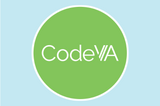
Problem Solving using Addition and Subtraction within 20 Formative Assessment - Just in Time Quick Check, Teacher Notes, and Supporting Resources
- Subject:
- Mathematics
- Material Type:
- Assessment
- Provider:
- VDOE
- Author:
- VDOE
- Date Added:
- 10/03/2024

Problem Solving using Addition and Subtraction within 20 Formative Assessment - Just in Time Quick Check, Teacher Notes, and Supporting Resources

Creating and Solving Problems using Addition Facts Mathematics Instructional Plan

In this lesson, students will engage in socio-political critique as they think through what might happen when people fail to successfully complete different parts of the problem-solving process. Students will engage in a case study of Summit Learning, a “personalized” learning platform that led to protests and walkouts. They will think through how the designers of Summit Learning failed to solve their problem, and then make a plan to solve a problem of their own using the problem-solving process.

I Am a Problem Solver Mathematics Instructional Plan

Shopping for Thanksgiving Lunch: Computation Mathematics Instructional Plan

Adding and Subtracting Fractions: Understanding the Context

Solving Contextual Problems: Adding and Subtracting Decimals Mathematics Instructional Plan

Solve practical problems with whole numbers using multiplication, division, addition, and subtraction - Algebra Readiness Remediation Plan

Solve multistep practical problems using a variety of strategies - Algebra Readiness Remediation Plan

Identifying appropriate strategies to solve problems with whole numbers - Algebra Readiness Remediation Plan

Finding the Hidden Question in Multistep Problems - Algebra Readiness Remediation Plan

Identifying appropriate strategies to solve problems - Algebra Readiness Remediation Plan

Solving practical problems using the four basic operations with whole numbers - Mathematics Instructional Plan

Solving practical problems involving decimal estimation and computation - Mathematics Instructional Plan

Solving problems involving addition and subtraction with fractions and mixed numbers - Mathematics Instructional Plan

Multiplying Fractions and Whole Numbers - Mathematics Instructional Plan

Solve Problems Involving Operations with Fractions and Mixed Numbers

Problem Solving Strategies for Finding the Hidden Question Algebra Readiness Remediation Plan

Practical Problems Involving Decimals Mathematics Instructional Plan

Solve two step linear equations in one variable - Algebra Readiness Remediation Plan